Improving Waste Issues Through Environmental Education Classes That Respond to Children's Strong Curiosity
2025.10.08
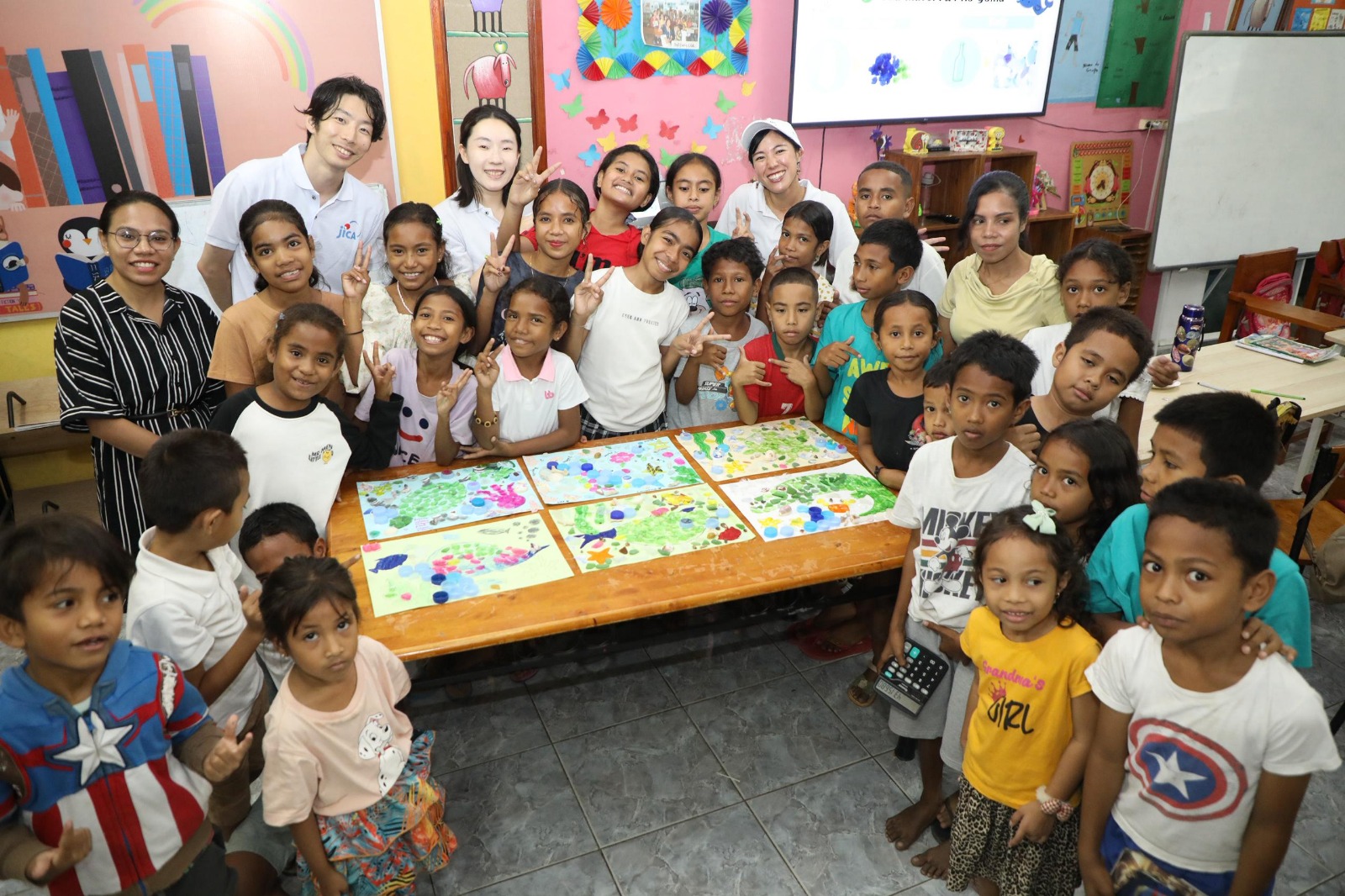
Mitsuki Chinone
Since May 2025, I have been teaching Japanese at a facility in Dili City as a Youth Activity Volunteer. The facility I work at, Centro Quesadhip Ruak (CQR), is operated by an NGO that aims to help young people participate in society and contribute to the development of the country through education. People of all ages attend various courses and learn a wide range of subjects.
My main duty is to teach Japanese to adults attending the Japanese language course, but once a week, I also teach Japanese to children.
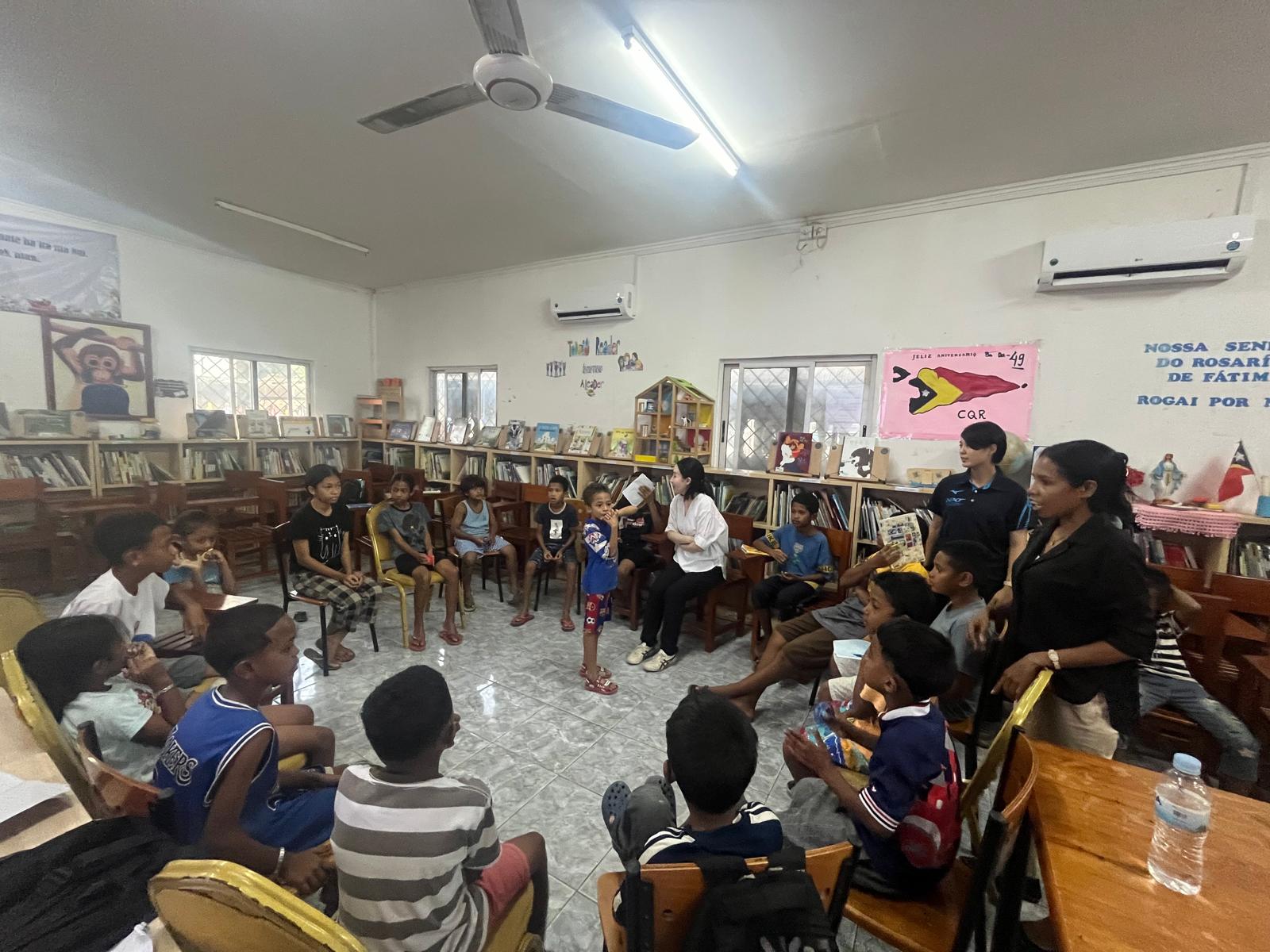
Usual classroom
Timor-Leste has a very high number of children, and many elementary schools operate in two shifts, with actual learning time being only three hours. Children who come to CQR attend before or after school to learn Portuguese, math, English, Japanese, art, and more. It functions much like an after-school program.
What struck me most when interacting with children in Timor-Leste was their incredibly strong curiosity and friendliness. After class, they run around playfully outside, climb large green trees, play soccer barefoot, and fly kites. However, looking at their feet, one can see many pieces of trash such as plastic bottles, cans, and candy wrappers scattered around. When it rains, it is not uncommon for black or reddish-brown wastewater and a lot of garbage to flow around the facility.
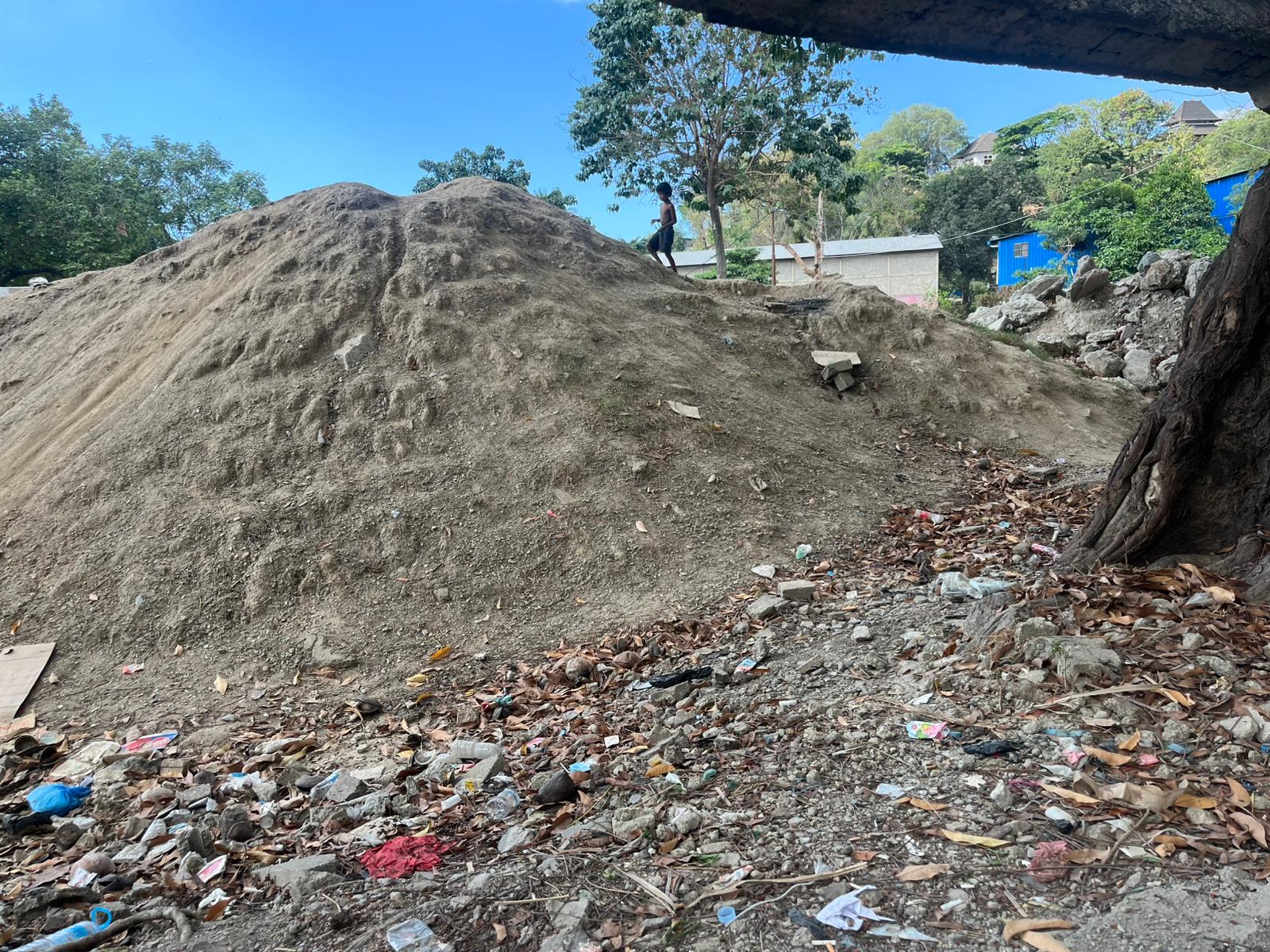
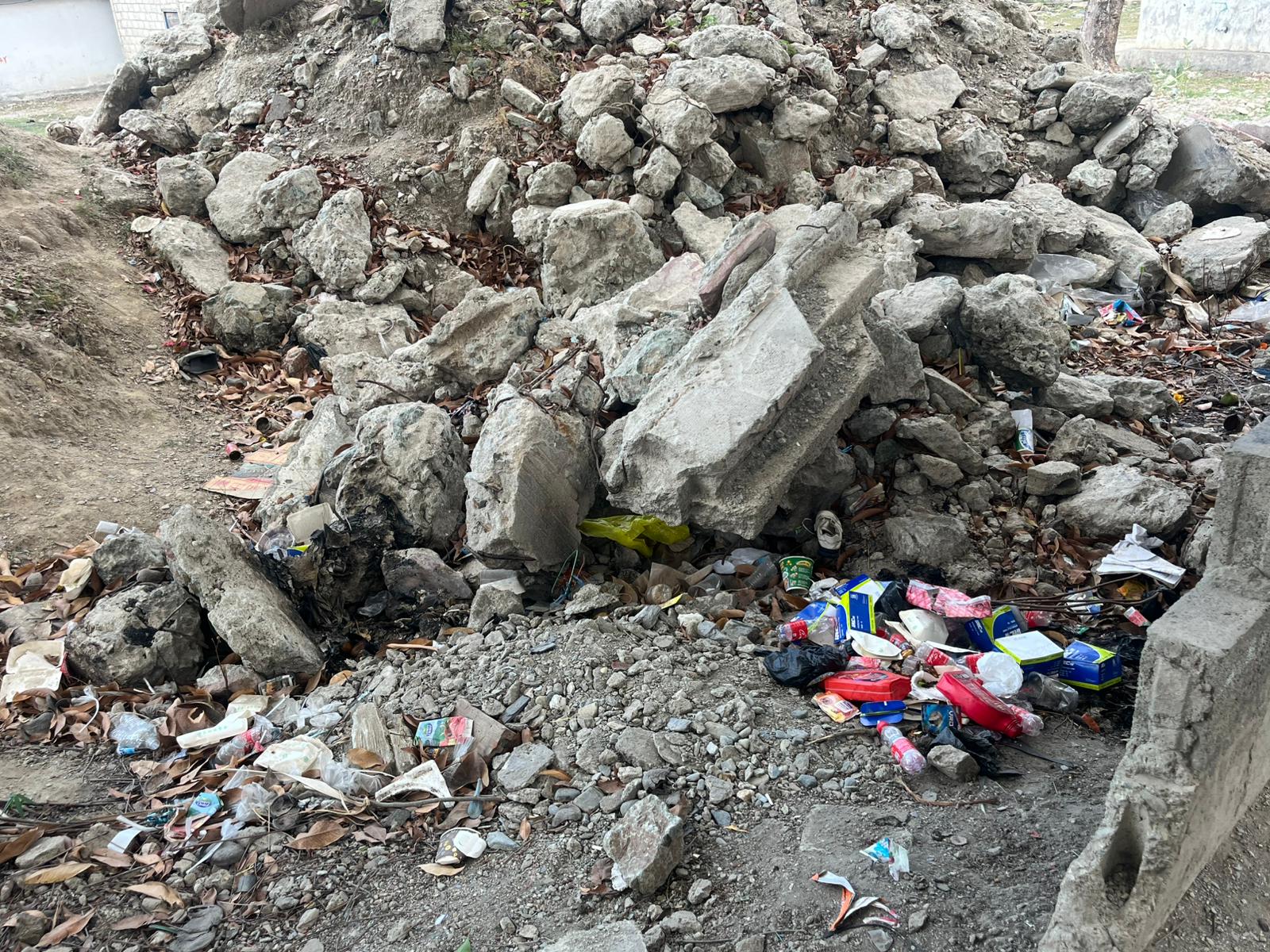
For these children, seeing trash on the roadside is part of everyday life—they live in a place where this is the norm.
Although my main job is to teach Japanese, I felt there was something more important they needed to know, so I decided to conduct a class about waste issue. It’s easy to tell children “throw trash in the bin,” but what’s important is the “why.” I wanted to create a class that would respond to their strong curiosity. With the help of Arisa Minoru (2023 3rd batch, Environmental Education), we decided to hold an environmental education class.
In the first half of the class, Ms. Minoru explained the waste problem and read a picture book. In the second half, children were divided into groups and challenged to create recycled art. The children listened intently to Minoru’s explanation, even those who usually find it hard to sit still. I vividly remember their gasps when photos of past pollution incidents in Japan were shown.

Introducing Japanese polution history by Ms. Minoru
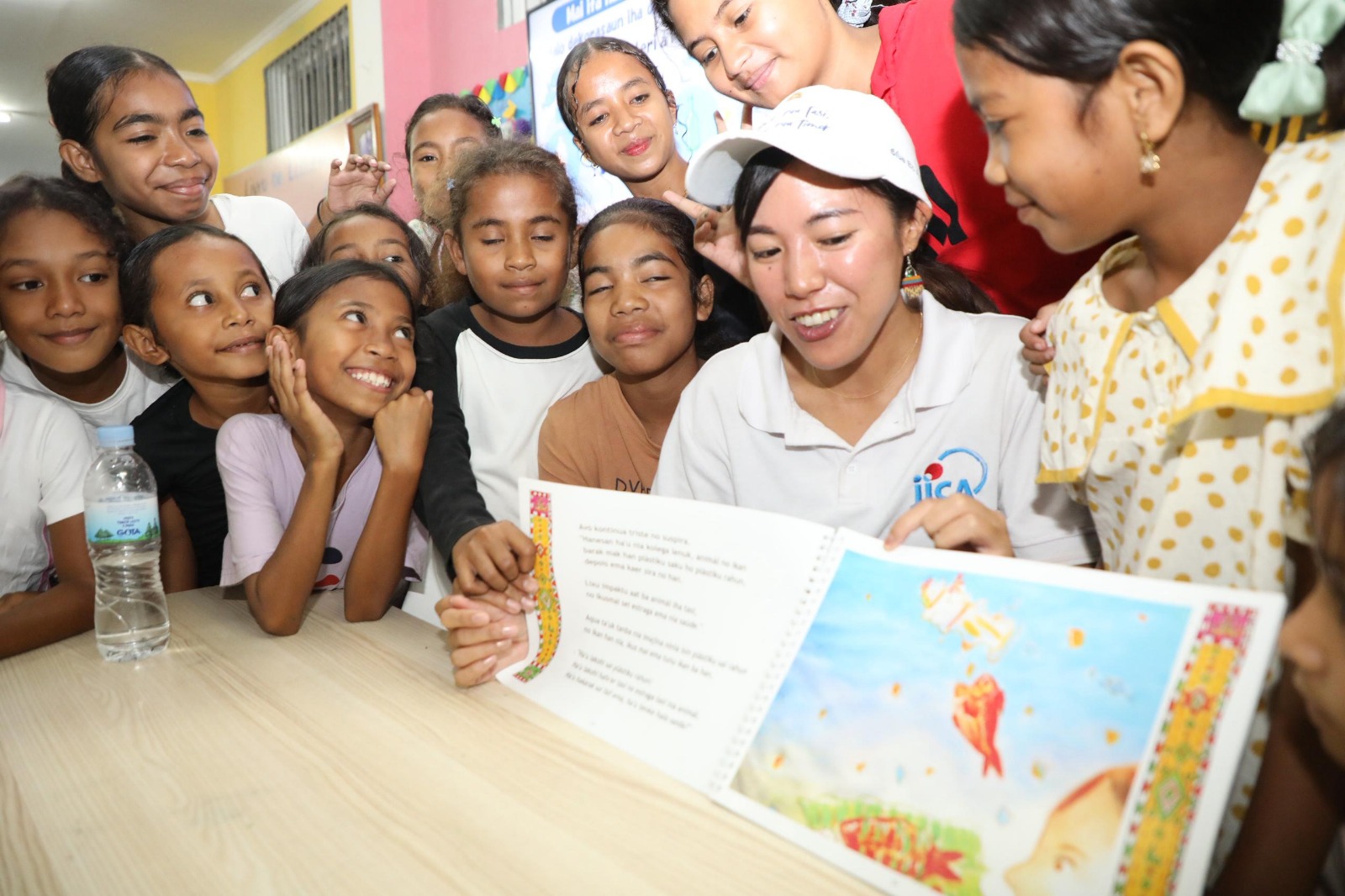
Ms. Minoru read the picture book
In the second half, children used trash such as plastic bottles and sea glass to create recycled art. This was planned to help them feel that “reusing resources is fun and recycling is something we can do.” However, it was also important to connect this activity to the earlier explanation and to consider that most children had little experience with crafts using various materials. I wondered whether they could do the crafts and how much of the waste issue could be conveyed—this was a bit of a challenge for me.
Drawing on my experience working at an art museum in Japan, I prepared thoroughly to ensure the children could work smoothly. Other JOCVs teaching Japanese at different schools and students from the Japanese course helped collect a large number of plastic bottles. Jitsu and I also searched for sea glass on the beach to gather as many materials as possible.
About 30 children participated. They were divided into six groups and worked together with friends to create their pieces. Contrary to my initial concerns, everyone created their own unique works.
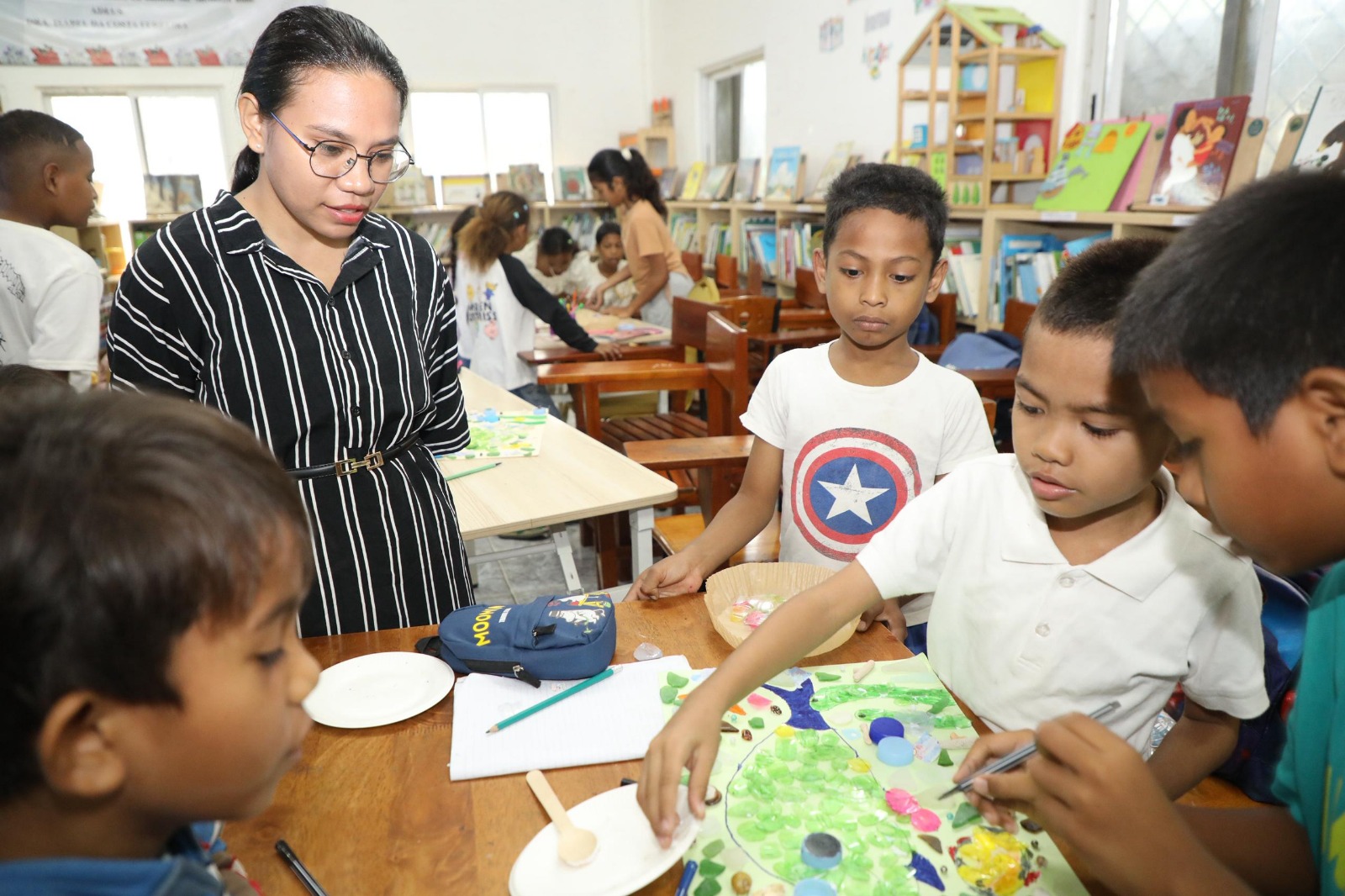
Children creates recycle-art
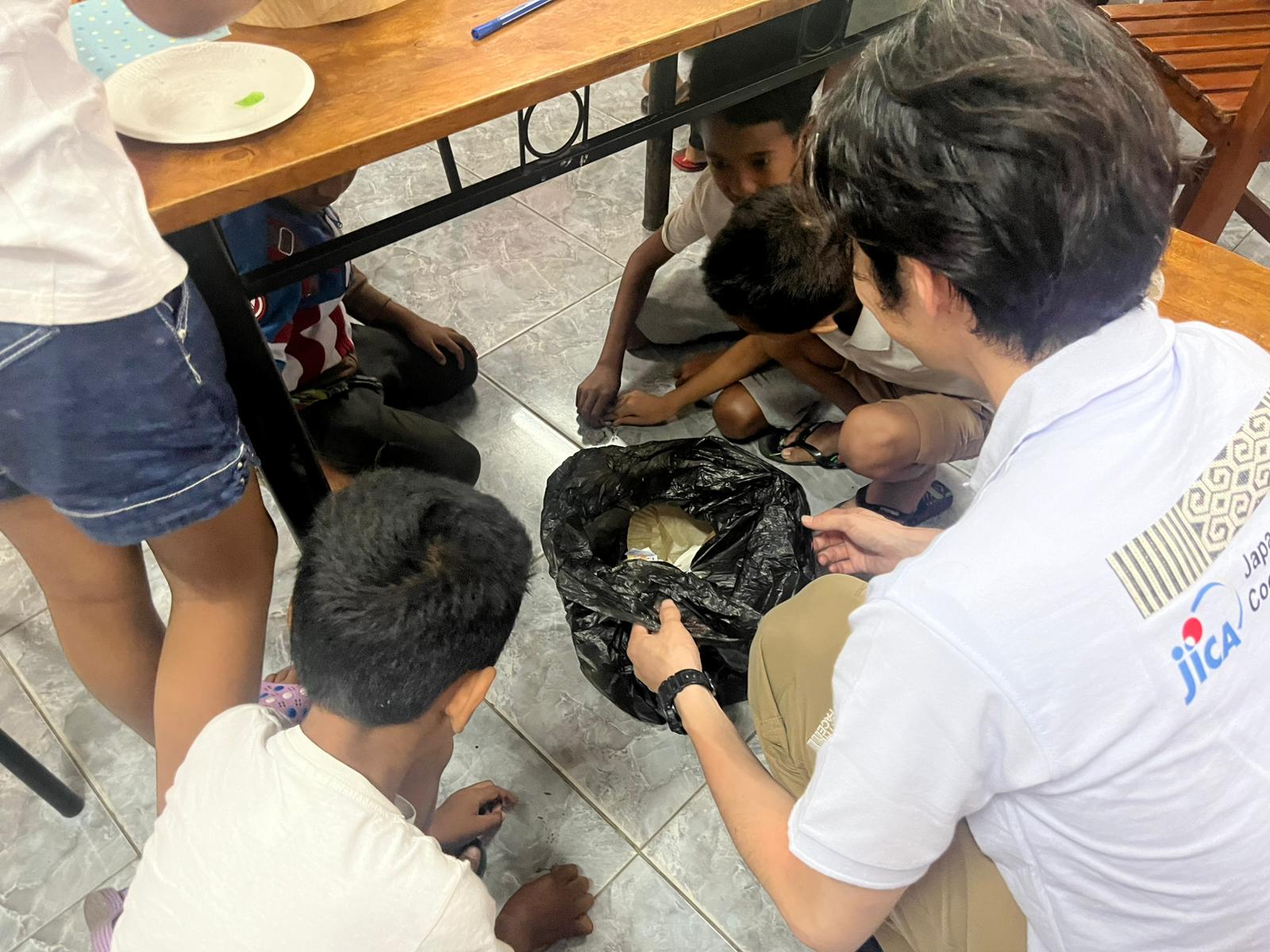
Pickup waste after class
What made me happiest was that at the end of the class, the children began cleaning up the trash on their own. When a boy came to me and asked, “Where should I throw this trash?” I felt joy knowing that today’s class, which began with Jitsu’s lecture, had reached him.
I realized again that if educators can respond well to children’s strong curiosity, they can absorb an incredible amount. To ensure this change doesn’t end in a single day, the teachers continue to instruct the children to “throw trash in the bin.”
I believe each child gained their own learning and awareness from this environmental class. The joy of knowing and understanding is not limited to environmental improvement—it will be useful in various future learning experiences. I hope that the teachers at CQR and our activities will nurture their intellectual curiosity and ultimately expand the children’s future options.
scroll